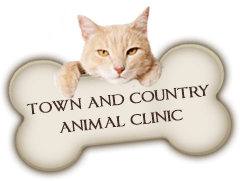Disasters can be a difficult time for both pets and people alike. To ensure you are keeping your pet safe, the following are some tips to help you prepare for disaster:
- Before the event occurs, find out which evacuation shelters allow pets: It is common for people to be turned away at relief shelters because some facilities do not accommodate pets. If there is the possibility of a disaster occurring in your area, call your local and county officials to find out where to bring your pet in the event of a natural disaster. Your veterinarian may also take in pets during severe weather. It is best to have options available before the incident happens.
- Use a pet carrier: The safest place for your pet to be during any stressful event is in a carrier. This will be your most important piece of equipment during the aftermath of a disaster. Carriers may be required at the relief shelter which will provide your pet with a safe haven during the chaos. Label the carrier with your pet’s name, breed, sex, date of birth, your current address and contact numbers. We also recommend labeling the name of your veterinarian along with current medications or medical information regarding your pet’s condition.
- Make sure you have at least 2 weeks of your pets medications on hand: Pack a 14 day supply of medication on top of your carrier (so your pet does not ingest all of the pills during the transport) and write down the administration schedule in case you have to leave your pet at a facility. Apply heartworm and flea preventative before placing your pet in an evacuation facility even if it is not quite time. They may be exposed to fleas and mosquitoes so the extra protection will help.
- Pack 7 days worth of food and water: We recommend dividing your pets meals into individual bags or bins to ensure you pack enough food for your pet. This will also make it easier for the person taking care of your pet during the disaster. It is also recommended to bring bottled water for your pet as it may be in short supply during the disaster. On average a 20 lbs dog will consume 24 ounces of water per day and a 10 lbs cat will consume 8 ounces per day.
- Bring at least 2 leashes: A slip lead would be preferable over a regular leash because in a fearful situation a dog may slip out of his collar. Also carry a spare leash in your pocket in case you or someone else is in need of it.
Any natural disaster can be a very stressful situation for both you and your pet. Being prepared ahead of time will help you remain calm during the event!
If you have any questions or concerns please call us at the Town and Country Animal Clinic at (519) 250-0099.
www.TownandCountryAnimalClinic.ca







